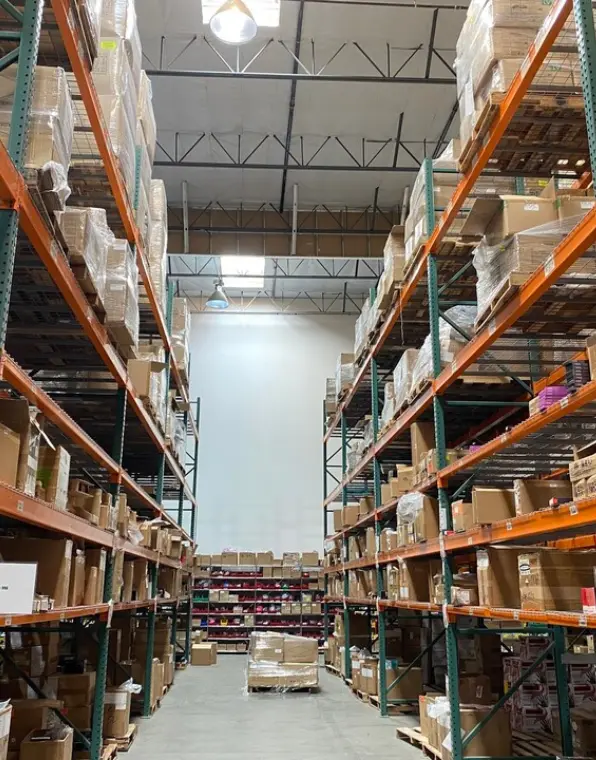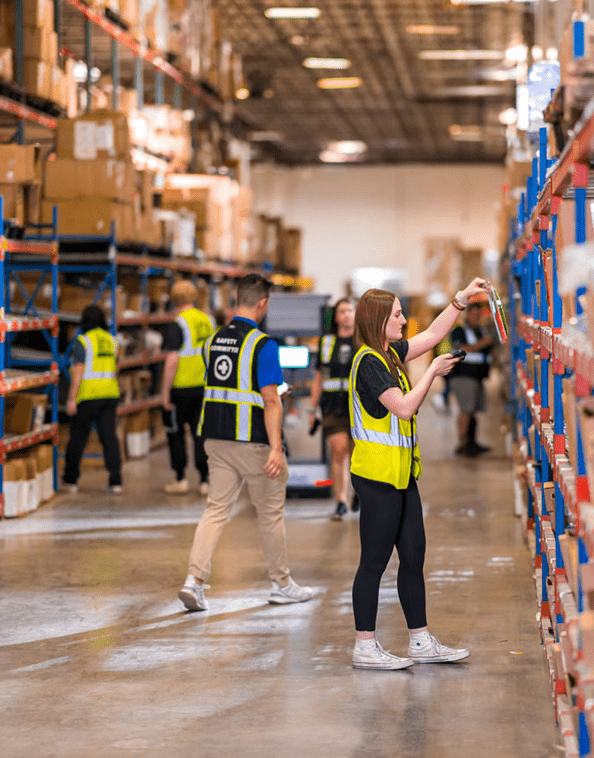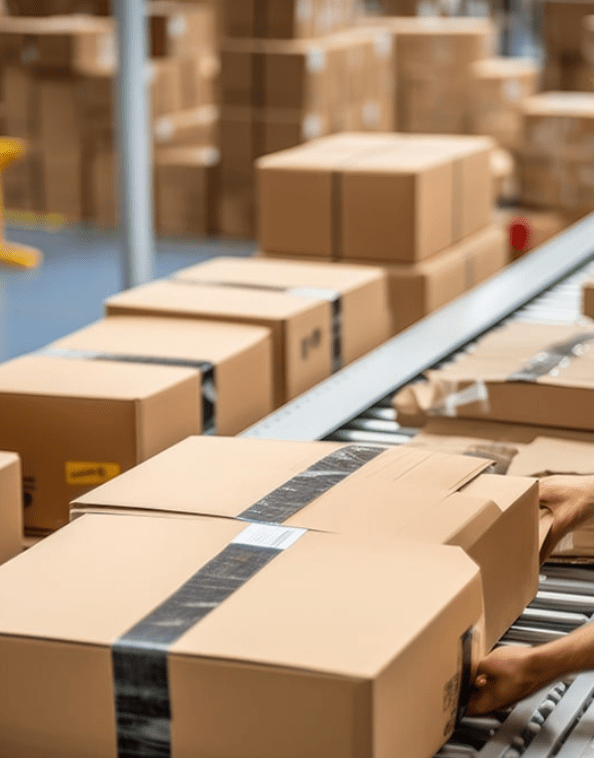Introduction
A robust eCommerce fulfillment strategy is no longer just an operational requirement—it’s a critical growth engine. The speed, accuracy, and cost-effectiveness of your fulfillment operations directly influence customer satisfaction, brand loyalty, and profitability.
Heading into 2026, consumer expectations for fast and reliable delivery continue to rise, shipping costs are volatile, and Amazon’s FBA program has introduced several major changes in 2025 that impact inventory, storage, and delivery standards.
Whether you manage fulfillment in-house, outsource to a 3PL, or operate a hybrid model, this guide explains how to design a fulfillment strategy that supports scalability, protects margins, and enhances customer experience.
1. What Is an eCommerce Fulfillment Strategy?
Your eCommerce fulfillment strategy defines how products move from your warehouse—or your 3PL partner—to your customer. This includes inventory management, warehouse layout, order processing, picking, packing, shipping, and returns.
The goal is to deliver a seamless experience for both your team and your customers while keeping costs predictable and scalable. Brands with clear, data-driven fulfillment strategies enjoy faster delivery, lower shipping costs, and fewer operational errors.
2. Why Fulfillment Strategy Drives Profitability
Fulfillment can account for 15–25% of total eCommerce expenses, making it a major driver of profitability. A well-structured strategy can:
Reduce costs through optimized warehouse layouts, strategic inventory placement, and smart shipping decisions.
Increase revenue by enabling faster, reliable delivery, which improves conversion and repeat purchases.
Enhance brand trust through timely delivery and smooth returns.
Support growth by providing a scalable system that can handle seasonal surges or rapid expansion.
Investing in fulfillment strategy is investing in customer experience, operational efficiency, and long-term business sustainability.
3. Core Elements of a Modern eCommerce Fulfillment Strategy
a. Inventory Management
Inventory isn’t just stock—it’s a strategic lever. Accurate forecasting ensures you have the right products in the right locations. Key practices include:
SKU velocity analysis: Prioritize fast-moving items near packing stations for faster fulfillment.
Demand-based stock allocation: Use historical sales data to distribute products regionally.
Safety stock planning: Maintain buffer inventory for unpredictable spikes without overstocking.
b. Warehouse Network Design
Strategic warehouse placement reduces shipping times and costs. Options include:
Single centralized warehouse: Lower fixed costs but slower delivery for distant customers.
Multi-node regional network: Reduces shipping zones, cuts delivery times, and improves customer satisfaction.
Hybrid fulfillment (in-house + 3PL): Flexibility to scale quickly without owning additional real estate.
c. Picking, Packing, and Shipping
Operational efficiency directly affects cost and delivery speed. Key tactics include:
Batch picking: Process multiple orders at once to reduce labor time.
Zoned picking: Group items in warehouse zones based on order patterns.
Smart packing: Right-size boxes, use lightweight materials, and include branded packaging when possible.
d. Technology Integration
A modern strategy requires seamless technology to unify operations:
Order Management System (OMS): Centralizes orders across channels, prevents overselling, and ensures accurate allocation.
Warehouse Management System (WMS): Automates slotting, tracks inventory in real time, and manages labor.
Analytics and dashboards: Measure fulfillment KPIs, track inventory, and forecast demand for continuous improvement.
e. Customer Experience
Fulfillment is part of your brand promise. Features that enhance CX include:
Real-time tracking and delivery notifications.
Clear communication for delays or exceptions.
Flexible returns and exchanges that don’t burden the customer.
4. The Amazon FBA Changes in 2025
Amazon introduced significant changes in FBA during 2025, affecting fulfillment strategies for all sellers. Adapting to these updates is crucial for maintaining Prime eligibility, reducing costs, and preventing lost sales.
Key FBA Updates
Regional Inventory Requirements
Sellers must assign inbound shipments to regional nodes to improve delivery times. This increases accuracy but requires careful inventory planning.Low-Inventory Fees
Amazon now penalizes SKUs that frequently go out of stock, incentivizing better restocking practices.Capacity Reservations
Sellers can reserve warehouse space for peak periods, providing cost predictability and reducing risk of stock unavailability.Delivery Speed Enforcement
Amazon tightened its 2-Day Regional Standard, requiring faster replenishment and regional coverage to maintain the Buy Box.
Strategy Adjustments
Use predictive demand tools to balance inventory across regions.
Consider hybrid fulfillment: mix FBA with 3PL storage to maintain flexibility.
Monitor SKUs with low velocity to avoid unnecessary storage costs.
Align your replenishment calendar with Amazon’s new metrics to avoid penalties.
5. Advanced Inventory Optimization Tactics
a. Basket Analysis
Analyze which products are frequently purchased together and co-locate them in warehouses. Benefits:
Reduces split shipments by up to 30–35%.
Increases average order value.
Cuts labor time and shipping costs.
b. SKU Velocity Segmentation
Categorize SKUs by turnover:
High-velocity items: Place near packing stations for rapid fulfillment.
Low-velocity items: Store in less accessible areas, freeing prime warehouse space.
c. Regional Demand Forecasting
Forecast demand at the ZIP-code or regional level. Advantages:
Reduce 2-day delivery costs by 25–30%.
Place inventory closer to customers to minimize shipping zones.
Adjust for seasonality and local trends.
6. Optimizing Carrier Selection
Shipping is often the largest operational cost. Consider:
Dynamic Carrier Selection
Use real-time algorithms to pick carriers based on cost, speed, and reliability.
Regional Carriers
Smaller regional carriers can outperform national carriers in speed and price for certain locations.
Predictive Delivery Analytics
AI tools can predict delays and provide accurate ETA estimates, improving customer trust and satisfaction.
7. Technology Infrastructure for Future-Proof Fulfillment
A robust tech stack is key to scalable operations:
Order Management Systems (OMS): Real-time inventory across channels.
Warehouse Management Systems (WMS): Slotting, labor tracking, and quality control.
Unified Analytics: Central dashboard to monitor KPIs, SKU profitability, and SLA performance.
API Integrations: Seamless connections to eCommerce platforms, marketplaces, ERPs, and carriers.
8. Seasonal & Peak Period Planning
Seasonal surges can break unprepared operations. Steps for resilience:
Forecast volume using historical data and trend analysis.
Reserve warehouse capacity and carriers ahead of peak periods.
Implement temporary labor or automation to manage spikes.
Use flexible inventory allocation between FBA and 3PLs.
9. Metrics That Define Fulfillment Success
Track these KPIs to measure effectiveness:
Order accuracy rate
Average fulfillment time (AFT)
Shipping cost per order
On-time delivery rate
Inventory turnover ratio
Return rate and reasons
Customer satisfaction (CSAT/NPS)
Regularly reviewing these metrics informs operational adjustments and improves decision-making.
10. Common Fulfillment Mistakes to Avoid
Single warehouse reliance limiting reach.
Ignoring demand seasonality.
Underinvesting in technology and automation.
Poorly managed returns process.
Non-compliance with FBA or marketplace rules.
Avoiding these ensures your strategy remains scalable, efficient, and customer-friendly.
11. Building Your Action Plan for 2026
Quick Wins (0–30 days):
Audit current inventory placement and fulfillment operations.
Track carrier performance and diversify shipping options.
Measure conversion rates relative to delivery performance.
Strategic Moves (3 months):
Deploy predictive demand forecasting with regional granularity.
Optimize fulfillment network design based on customer distribution.
Implement proactive customer communication for exceptions and delays.
Long-Term Investments (6–12 months):
Develop omnichannel fulfillment capabilities for marketplaces, retail, and DTC.
Invest in AI-driven analytics for continuous optimization.
Build scalable infrastructure aligned with 3–5 year growth plans.
12. Future Trends in eCommerce Fulfillment
Robotics and automation: Warehouse robotics for picking, packing, and sorting will continue to expand.
AI-driven demand forecasting: More accurate inventory allocation reduces waste and stockouts.
Sustainability initiatives: Eco-friendly packaging and reduced shipping distances improve both margins and brand perception.
Flexible fulfillment models: Hybrid FBA + 3PL strategies provide resilience in volatile markets.
13. Why FulfillMe Can Help You Execute Your eCommerce Fulfillment Strategy
Designing a strong eCommerce fulfillment strategy is one thing—executing it at scale is another. FulfillMe provides the tools, expertise, and flexible network to help brands turn strategy into results.
Technology-enabled fulfillment: Real-time visibility into inventory, orders, and shipping across multiple channels and locations.
Regional and FBA-ready capabilities: Manage both 3PL and Amazon FBA logistics, keeping inventory optimally positioned for speed and cost efficiency.
Scalable network: From seasonal peaks to long-term growth, FulfillMe adjusts to your business needs without requiring fixed warehouse investments.
Data-driven insights: Actionable analytics help optimize inventory, carriers, and warehouse layouts—making your fulfillment strategy more profitable and reliable.
By partnering with FulfillMe, your fulfillment strategy isn’t just a plan on paper—it becomes a competitive advantage that drives faster delivery, lower costs, and happier customers.
Key Takeaways
An eCommerce fulfillment strategy is critical to growth, profitability, and customer loyalty.
Amazon FBA 2025 changes require regional inventory planning, better forecasting, and hybrid fulfillment solutions.
Technology integration, data-driven decisions, and warehouse network optimization are essential for scalability.
Tracking KPIs like order accuracy, delivery speed, and cost per order ensures continuous improvement.
Partnering with FulfillMe turns strategy into execution, giving your brand a competitive edge.

Norman Kravitz is a logistics and fulfillment expert with extensive experience in e-commerce supply chains, currently serving as CEO and Founder of FulfillMe, a technology-enabled 3PL provider. Beginning his career at the United States Postal Service and later leading operations at Ddu Express, he has deep expertise in freight forwarding, inventory management, and cost optimization. Norman’s strategic approach to logistics operations and e-commerce fulfillment positions him as a trusted authority in the 3PL industry.








